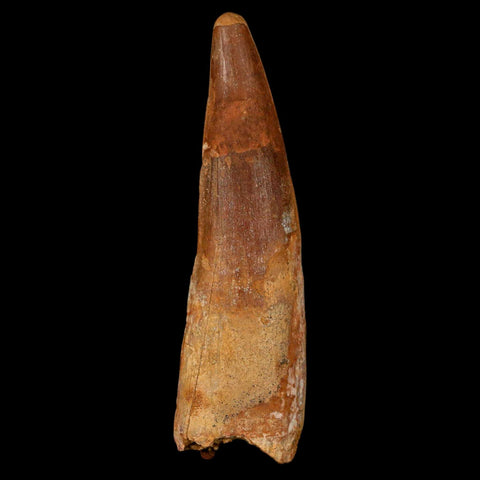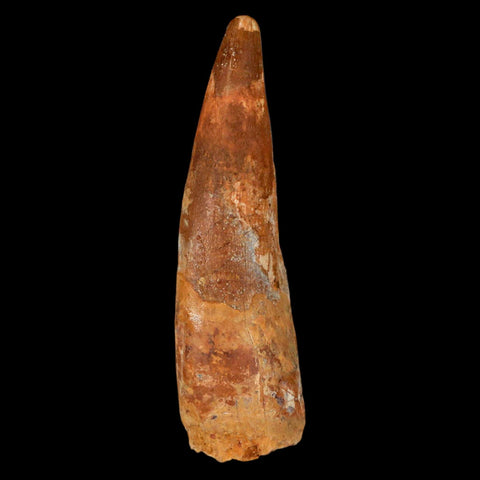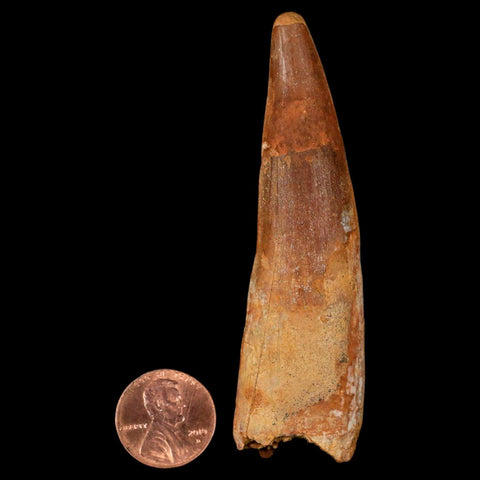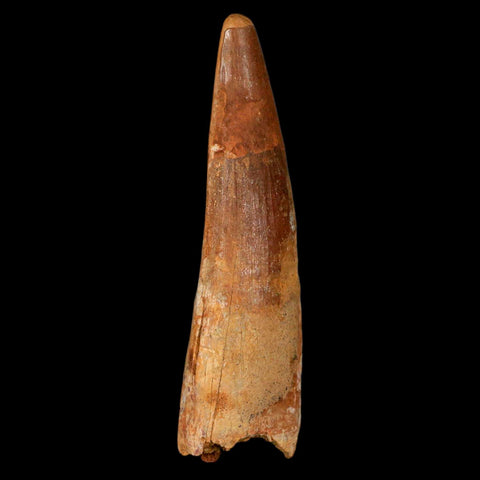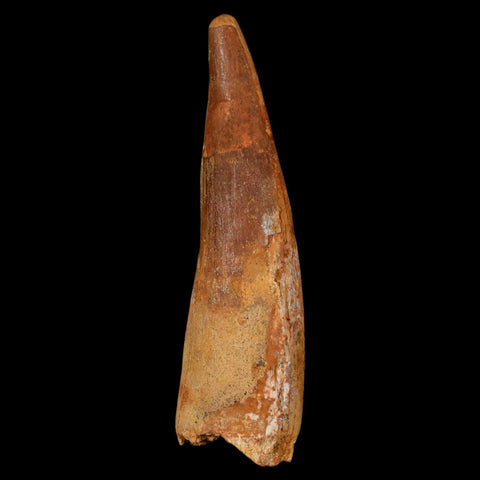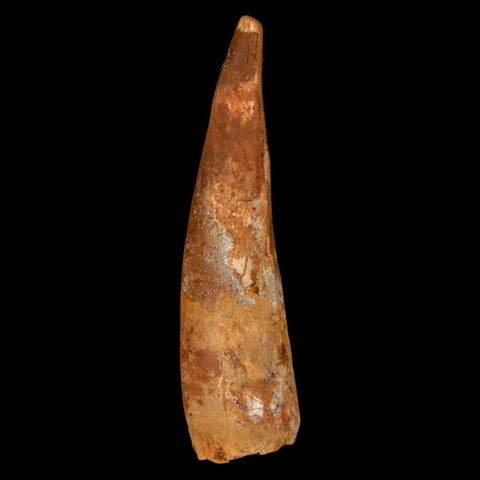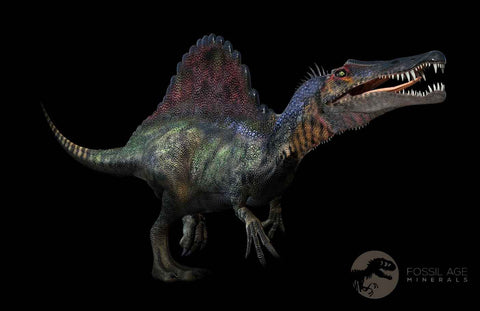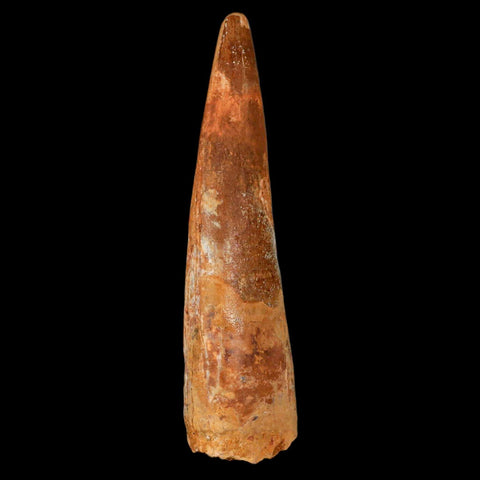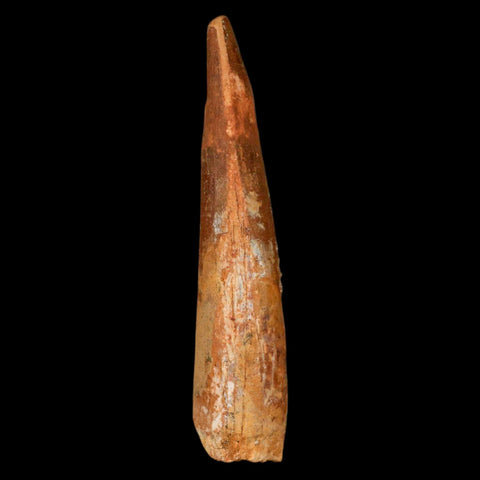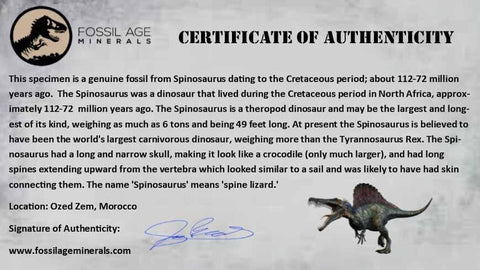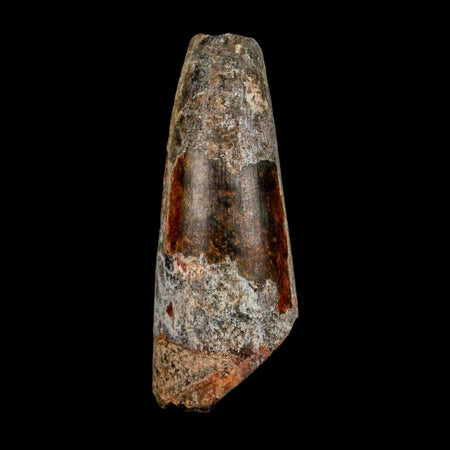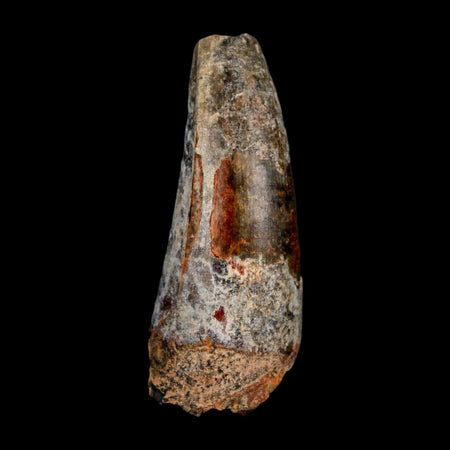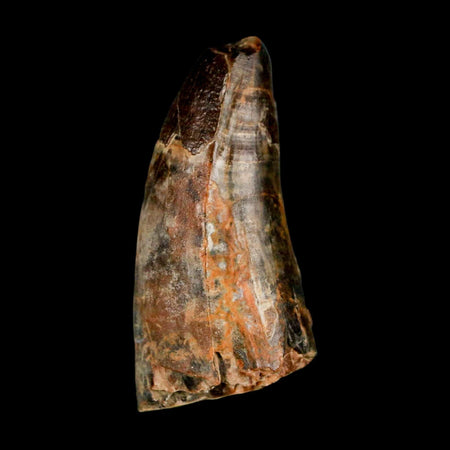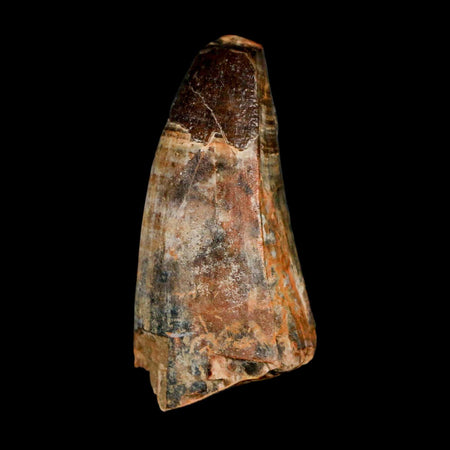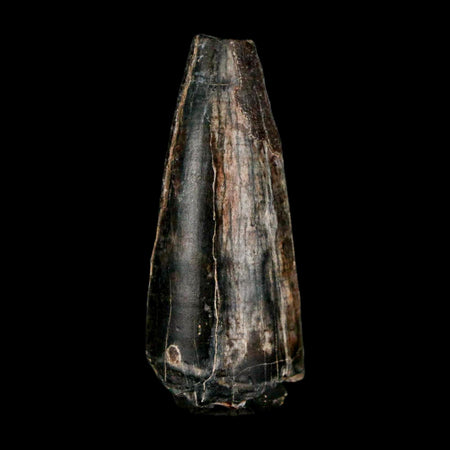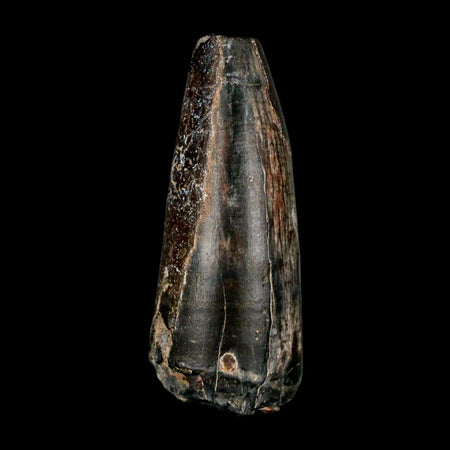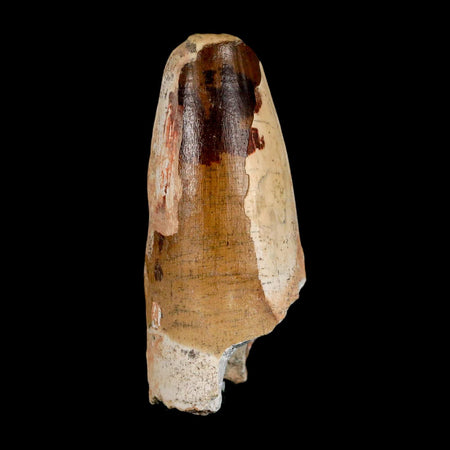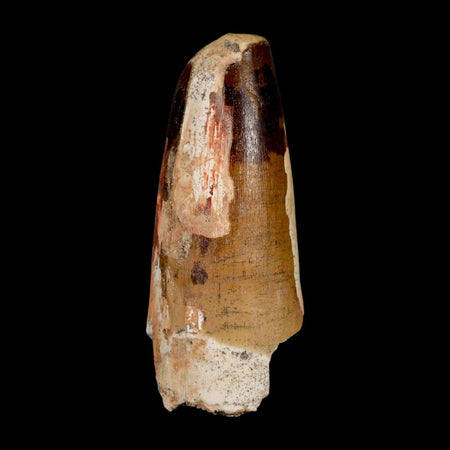XL 3.3" Spinosaurus Fossil Tooth 100 Million Years Old Cretaceous Dinosaur COA
Location: Oued Zem, Morocco
Weight: 1 Ounce
Dimensions: 3.3 Inches Long, 0.9 Inches Wide
Comes with a Certificate of Authenticity.
This is a real fossil.
The item pictured is the one you will receive.
Name: Spinosaurus (Spine lizard).
Named By: Ernst Stromer - 1915.
Diet: Piscivore/Carnivore.
Size: Estimated between 12.6 and 18 meters long.
Known locations: North Africa, particularly Egypt - Bahariya Formation, and Morocco - Kem Kem Beds.
Time period: Albian to Cenomanian of the Cretaceous.
Fossil representation: To date at least six partial specimens of the skull, mandible, neural spines, and other fragmentary postcranial remains. Teeth, however, are considerably more common.
The Spinosaurus was a dinosaur that inhabited North Africa during the Cretaceous period, around 100 million years ago. Classified as a theropod, it is possibly the largest and longest species within its group, measuring up to 49 feet in length and weighing approximately 6 tons. Current research suggests that the Spinosaurus was the largest carnivorous dinosaur known, surpassing even the Tyrannosaurus Rex in mass. Its distinctively long and narrow skull resembled that of a crocodile, but on a much larger scale. Additionally, it featured elongated spines projecting from its vertebrae, forming a sail-like structure that was probably covered by skin. The term ‘Spinosaurus’ translates to ‘spine lizard,’ highlighting this notable characteristic.

Please be aware of the nature of fossils:
Being buried under the ground for millions of years under tons of pressure tends to be rough. No fossil comes out of the ground whole and perfect. Most fossils have undergone some restoration, while others are altered by man simply to enhance their presentation in different ways. The workers in Morocco do a very professional job of unearthing and preserving these natural treasures; however, natural cracks are commonly visible on the surface. These are part of the natural beauty of the fossil and are not considered defects.


